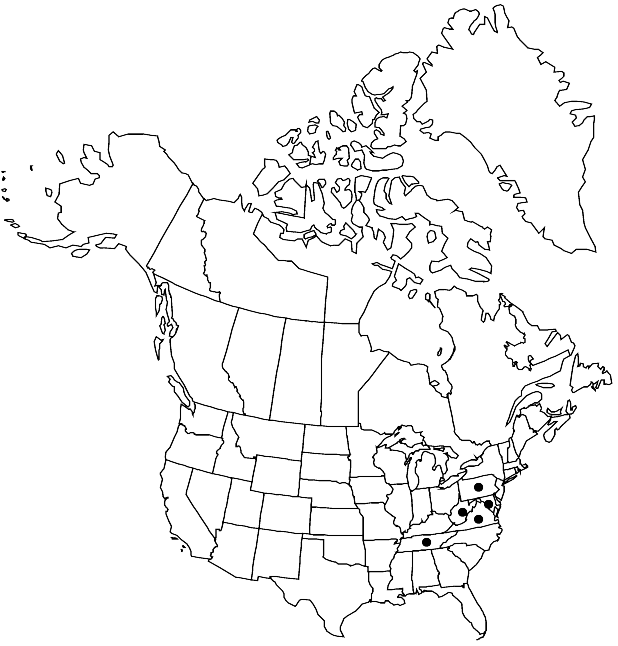Boechera burkii
Harvard Pap. Bot. 12: 237. 2007.
Biennials; short-lived; sexual; caudex not evident. Stems usually 1 per plant, arising from center of rosette near ground surface, (2–)3–7 dm, glabrous throughout, often glaucous. Basal leaves: blade oblanceolate to obovate, 4–10 mm wide, margins dentate, not ciliate, surfaces glabrous or sparsely pubescent subapically, trichomes simple, 0.3–0.8 mm. Cauline leaves: 18–28, often concealing stem proximally; blade auricles absent, surfaces of distalmost leaves glabrous. Racemes 20–50-flowered, usually unbranched. Fruiting pedicels ascending to divaricate-ascending, usually straight, 4–12 mm, glabrous. Flowers ascending at anthesis; sepals glabrous; petals white, 3–5 × 0.5–0.7 mm, glabrous; pollen ellipsoid. Fruits divaricate-ascending, not appressed to rachis, not secund, usually curved, rarely straight, edges parallel, 5–10 cm × 1.5–1.8 mm; valves glabrous; ovules 64–80 per ovary; style 0.2–0.6 mm. Seeds uniseriate, 1.5–1.8 × 1.2–1.4 mm; wing continuous, 0.3–0.5 mm wide distally.
Phenology: Flowering Apr–May.
Habitat: Rocky areas, wooded slopes, stream banks
Distribution

Md., Pa., Tenn., Va., W.Va.
Discussion
Boechera burkii usually has been treated as a variety of Arabis laevigata (e.g., R. C. 1993). The two taxa differ substantially in leaf morphology, and no intermediates have been found despite broad overlap in their geographic ranges. Boechera burkii typically has 18–28 cauline leaves per plant, with blades linear, non-auriculate, and margins entire, whereas B. laevigata has 7–15 cauline leaves per plant, blades lanceolate, auriculate, and margins often dentate. The two are also separable on petal width, with B. burkii having significantly narrower petals (0.5–0.7 versus 1–1.5 mm wide).
Selected References
None.